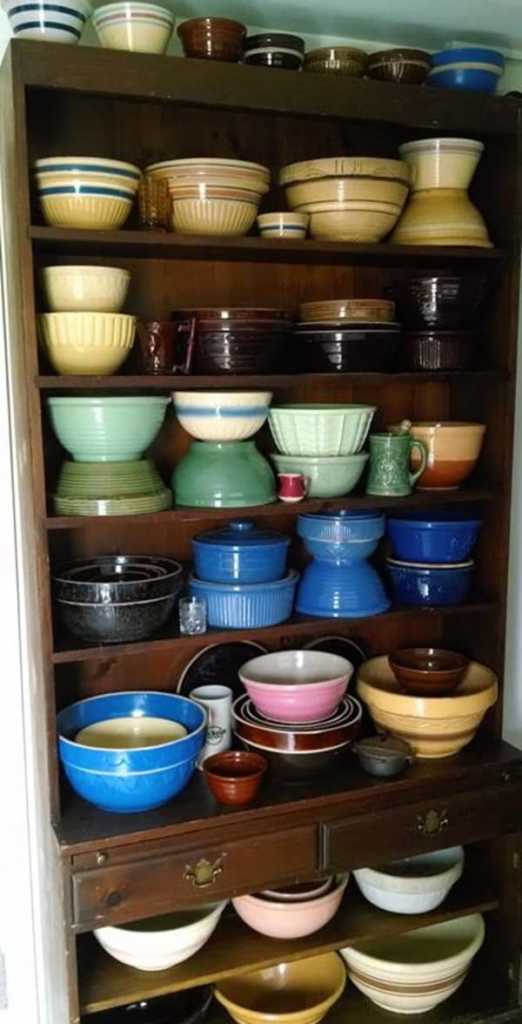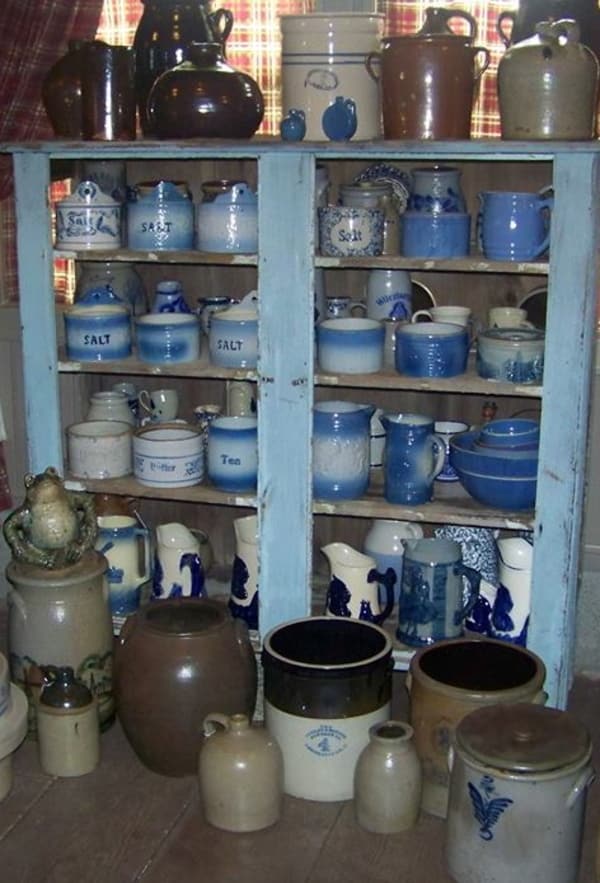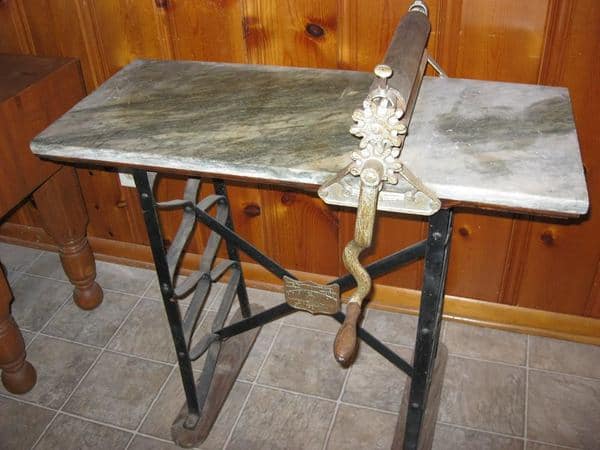Hello from Dusty Old Thing! We hope that everyone is looking forward to the weekend and that many of our readers will be able to get out and go “on the hunt” at antique shops, sales, auctions and thrift shops. Be sure to let us know about your “finds”.
We’d like to thank Theresa, Becky and Kay for sharing the antiques we’re featuring tonight.

The trouble with writing a Dusty Old Thing Post while preparing a late dinner is that the memory of old fashioned dishes, prepared in bowls like Theresa’s becomes even stronger. This is Nancy with Dusty and I imagine that many of our readers have the same reaction. We remember when our grandmothers used bowls like these to make dough for biscuits or breads or pie crusts. We remember the cake batters stirred by hand, the eggs beaten, the fruit cut up on it’s way to becoming a cobbler.
Antique and vintage bowls not only have beauty but also bring back memories. They invite us to want to try out some of the old dishes, to keep cooking traditions alive.

Stoneware crocks, jugs and the beautiful blue salt-glazed cellars, pitchers and bowls make for a wonderful collection. Salt-glazed pottery was the dominate domestic pottery during the 19th century, although pieces can go back to the American colonial period. Pieces were made by adding salt during the firing process to give a more glassy coating. The blue comes from the addition of cobalt oxide.
Crocks were vital to kitchens in days passed. Before refrigeration they might have held salted meats or pickled vegetables. Smaller ones would hold butter. Some of the American manufacturers included the Red Wing Stoneware Company, Minnesota Stoneware, Union Stoneware, Bennington and a whole host of regional potteries. Some can be quite desirable. Many collectors focus on a particular maker or region.

Beaten biscuits still are a staple of entertaining in the Bluegrass of Kentucky and in many places in the South. We’ve never really known why, except that they never die. They are hard to make and hard to chew, but like the traditions that just keep on keeping on, so do beaten biscuits served with prized country ham. While our great-grandparents, if they couldn’t afford a beaten biscuit table and roller, “worked the dough” by hand–often just by beating it over and over– today’s host just orders them from a bakery or specialty shop.
One old recipe we found calls for: “4 cups flour, 1 teaspoon salt, 5 level tablespoons lard, a pinch of baking soda, 1/2 cup water and 1/2 cup cold milk.” After the dry ingredients are sifted together and the lard cut in, the cook adds the liquids and works it just enough to form a stiff dough. For those without a biscuit table and rollers, the dough is “beaten with a rolling pin on a biscuit board, 300 to 500 licks.” Fortunate families would run the dough through the rollers until it was smooth and “popped”. The dough was then rolled out 1/2 inch thick and cut out small, often with a fluted edge. Each biscuit would be pierced three times with a fork and placed in the pan 1/2 inch apart. They were baked in a moderate oven “until risen“, usually about 10 minutes. The instructions then say “Increase heat and bake 15 minutes” more.
We have seen the beating of the biscuit dough done by the men of the family with mallets. The movement was much like laying track for a railroad!
Beaten biscuits date at least as far back as the early 19th century. In New England they were called “sea biscuits” and were often packed as a staple food on whalers or other sailing vessels. They can last months when stored in an airtight tin. They also can be lobbed as missiles during kitchen disagreements.
Of course, just like mint juleps and burgoo, the tradition of beaten biscuits lives on.
SKM: below-content placeholderWhizzco for DOT

